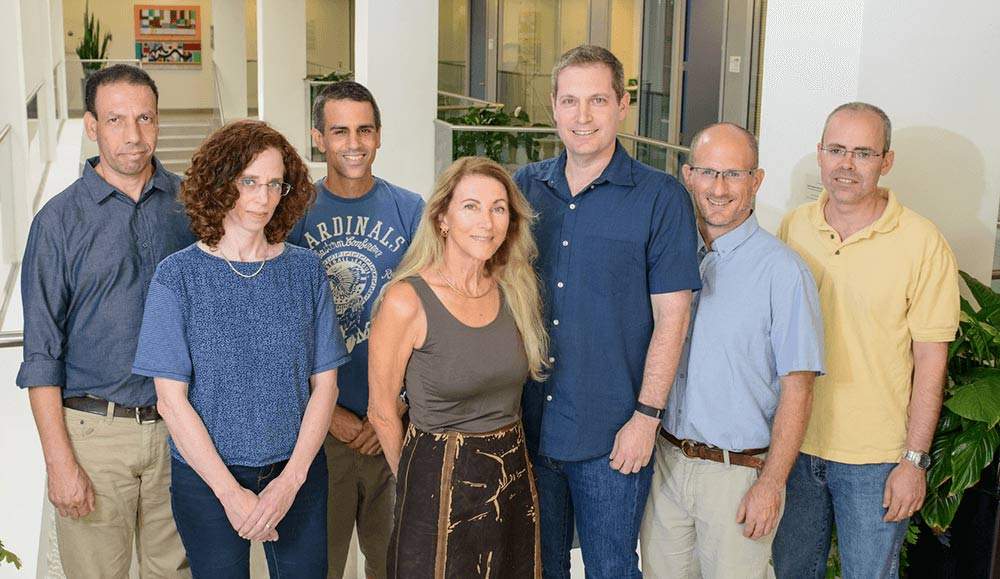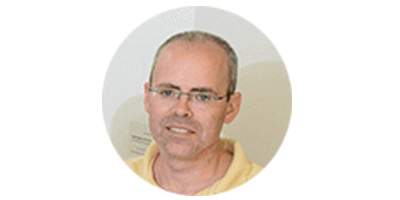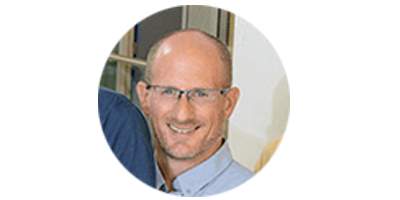Are you a journalist? Please sign up here for our press releases
Subscribe to our monthly newsletter:
Wanted: Unit Head to work in the Nancy and Stephen Grand Israel National Center for Personalized Medicine (G-INCPM). Must have a deep grasp of research in all the life sciences, experience with the most advanced instrumentation and analytical tools, and the ability to translate research questions into experiments (including those that stretch the capacities of the tools or require the invention of new protocols), plan and carry them out and design analytical methods. Must have the ability to think ahead, think big and plan for the next innovation in your field.

The Challenges
“One of the biggest challenges I faced in setting up the G-INCPM,” says Dr. Berta Strulovici, who heads the Center, which is located at the Weizmann Institute of Science, “was to build my team from scratch. When I started, there were no labs, no space. I had to make a plan and then find the people who could work within the framework the G-INCPM board of directors and I envisioned. I first looked for people I felt I could trust, and then they had to be people who could rise to a challenge – and create their own challenges. So I looked all over – in biotech and academia – not just in Israel but wherever I could find them.”
Strulovici had been a vice president at Merck in the US, where she had set up a unit for high-throughput drug discovery. She hadn’t planned on leaving Merck, but friends kept sending her the ad for the job as head of G-INCPM, telling her it seemed as if the job description had been written just for her. She says that when she came for the interview, “I saw familiar faces from my days as a student at the Weizmann Institute, and I felt that I had come home.”
They had to be people who could rise to a challenge – and create their own challenges
Strulovici’s challenges did not end with hiring the right people, however, nor did the team’s. For three years, as the former solar tower wings were transformed into lab space for the Center, the different units were taking shape and operating in temporary spaces all over the Weizmann Institute’s campus. How does one create a team from these separate units? Among other things, Strulovici initiated biweekly meetings where the groups could meet socially and share information. Now, she says, each unit has its own floor – and they are constantly running up and down the stairs to consult with one another.
Uncovering Cancer Cell Conversations

Dr. Dan Ben-Avraham, who heads the G-INCPM’s Ilana and Pascal Mantoux Institute for Bioinformatics, points out that much of today’s life sciences research could not be accomplished without bioinformatics. New methods of sequencing genes and proteins, or observing the dynamics of cells, yield mountains of data to be analyzed; and bioinformatics experts help tailor algorithms and analytical methods to each study. Members of the bioinformatics group begin working with research groups from the beginning, when experiments are still in the design stage, to ensure that the analytical methods can extract the best possible results from the data, and they continue to work closely together throughout the research process.
“We work with many life sciences research groups and all the other institutes in the G-INCPM,” says Ben-Avraham. “One study we are particularly excited about, in which Dr. Gilgi Friedlander of our unit participated, was done with the lab of Prof. Varda Rotter.”
Rotter’s Weizmann Institute research group examined the relationship between cancer cells and their neighbors. Rotter is a world-renowned expert on p53, a gene that is mutated in over half of all cancers, and thousands of studies in labs around the world have investigated its role in cancer cells. But how do the neighboring cells react when this gene is mutated – are they affected as well? Rotter and her group developed a new way to observe the cross-talk between cancer cells and healthy ones, by growing lung cancer cells that did not express p53, or expressed mutated p53, alongside certain normal cells that are known to sometimes abet cancer growth. Bioinformatics methods helped pinpoint a particular interaction.
Much of today’s life sciences research could not be accomplished without bioinformatics
The experiments revealed that a substance produced by the immune system, interferon beta, which is better known for initiating the immune reaction to viral infections, was involved in the intercellular communications. The neighboring cells produced the inflammatory interferon beta in response to the presence of the cancer cells. The team found that interferon beta reduces the levels of p53 in the cancer cells; this had the effect of curbing the cells’ inclination to migrate. But mutant p53 also had a way of getting the cells to “ignore” the interferon beta signal. This study suggests that some cancer patients might benefit from having interferon beta, which is already approved for use in multiple sclerosis, added to their chemotherapy cocktails.
“This type of research will lead, in the future, to personalized medicine, in which the drugs will be prescribed according to the genetic and metabolic profile of the individual,” says Ben-Avraham.
Although Ben-Avraham is relatively new to the G-INCPM, he has years of experience both in leading groups and in working with cutting-edge bioinformatics. After receiving a PhD from the Hebrew University of Jerusalem and a stint as a research fellow at the Institute for Aging Research at the Albert Einstein College of Medicine (NY), Ben-Avraham worked in computer-aided drug design as head of the Bio and Cheminformatics group for Proteologics, Ltd., as an Advanced Annotation team leader in the bioinformatics group of Quark Biotech Inc., and as a software developer for Comverse Technology, Inc. Now that he is working in a center that spans academia and industry, he says, he has the opportunity to take on new challenges and stretch his abilities, as well as be a part of the research that is changing our future.
Profile of a Disease Biomarker

Dr. Yishai Levin, head of the G-INCPM’s de Botton Institute for Protein Profiling, has already been a part of the Center for several years. His platform works with mass spectrometers – highly advanced instruments that enable his team to identify and quantify proteins in any type of mixture, as well as detect modifications that take place after the protein is minted from the DNA instructions. He and his team also work closely with scientific teams from the start of each project, designing experiments for characterizing proteins from biological samples.
For example, Levin and Dr. Alon Savidor, also of the de Botton Institute, recently participated in research led by Prof. Tony Futerman’s group at the Weizmann Institute, in which they analyzed the proteins in the cerebrospinal fluid of patients suffering from certain forms of Gaucher disease that affect the brain. Gaucher is caused by mutations in a particular gene for storing lipids in the cells, but it can take many forms – some treatable, others less so. Those that affect the brain are especially hard to treat, and understanding which proteins are overexpressed in the disease might not only help physicians diagnose the problem but may, in the future, help researchers develop new treatments.
The scientists identified a new protein that appeared at very high levels in these patients, as compared to the normal, control samples. Indeed they found that the more elevated the level of this protein in the sample, the more severe the disease. Although Gaucher is fairly rare, there is some evidence that the protein may play a role in other neurodegenerative diseases, including amyotrophic lateral sclerosis (ALS), in genetic diseases such as Tay-Sachs and possibly even in Parkinson’s.
Levin, who completed his PhD at Cambridge University, UK, is most excited about the prospects of taking on larger projects and creating new opportunities for biomedical research. “Together with the genomics unit, we have been discussing the creation of proteogenomics workflows in which research questions can be addressed in new ways,” he says.
Inventing New Genomics Methods

Dr. Shmulik Motola, who heads the Crown Institute for Genomics at the G-INCPM, says that coming to work at the Center is the fulfillment of a dream to work at the Weizmann Institute of Science. Motola completed his PhD under the guidance of the Institute’s Prof. Alex Tsafriri; he left a managerial position in MIT’s Genomics core facility to come to the G-INCPM.
With two state-of-the-art Illumina genome sequencers in the genomics lab and a dedicated team, Motola says that the Institute is ready to take on the largest jobs, as well as the most complex. “We try to work out a whole package for researchers, including helping with methods of sample preparation and analyzing the results, so that not only do they obtain the best experimental results possible but working with us often ends up being cost-effective,” he says.
To do this, says Motola, he and his team have to be highly inventive. Recently, working with Prof. Moshe Oren’s and Dr. Ido Amit’s groups at the Weizmann Institute, Drs. Sima Benjamin and Shlomit Gilad of the Crown Institute for Genomics helped to develop a new experimental method, which was published in Nature Protocols. This method looks at the process in which the genes are transcribed into the messenger RNA that carries the genetic instructions out of the nucleus. This takes place in several stages – one important stage being elongation, in which the RNA strands are forged, link by link. The new protocol enables researchers to simultaneously measure both the rates of the first stage in the process, or initiation, and those of elongation. Understanding whether certain genes are transcribed quickly or slowly can provide information about the lives of cells – both healthy and cancerous. This work has already generated interest among researchers around the world.
Motola is confident that the accomplishments of the Crown Institute for Genomics, which have ranged from research on reprogrammed stem cells to the genomes of gut microbes, are just the beginning. “We want to take on the really big projects,” he says.
Strulovici concurs with this view: “Everything here is built to be scalable,” she says. “We can add one machine or improve our software, and thus double our capacity. The studies we are planning with the Clalit Health Service, which will involve the genomic data for hundreds of people, are the kinds of projects that will really make good use of the G-INCPM facilities.”
Druggable Targets

Of all the G-INCPM units, Strulovici may work the most closely with the Maurice and Vivienne Wohl Institute for Drug Discovery, headed by Dr. Haim Barr. “Berta encourages us to think outside the box,” he says. “Because of her previous experience at Merck, she understands exactly what we need to do and how we can advance.” Barr has broad experience in the drug industry – including leading drug discovery efforts for Proteologics Ltd., translation of research from academic labs to biotech development for BiolineRX, and business and licensing development for the same company.
High-throughput drug discovery involves testing tiny amounts of different chemical and biochemical compounds – out of the 100,000 such compounds in the lab’s library – to see if any interact with particular proteins or other biological materials. These tests can involve all of the compounds in the library or any subset, and automated assay equipment can test them all in short order. Last year, Barr participated in research led by Prof. Yosef Yarden. Yarden and his colleagues had identified a protein that is overexpressed in certain aggressive breast cancers and that helps them metastasize and turn deadly. In the lab dish one can knock out genes and see what happens to the cancer, but genetic manipulation is not yet an option for the human body. The question was: is this protein a so-called druggable target? Can it be blocked, and will blocking it help to prevent metastasis? Screening in the Drug Discovery lab revealed several inhibitors of this protein, and further trials in Weizmann Institute labs showed that these inhibitors prevent the cancer cells from breaking out of the tissue that hold them in place. These findings have now been passed on to a pharmaceutical company for further research and development.
Is this protein a so-called druggable target?
Barr’s plans for the future take several different directions. He and his team are already pursuing one of them: the ability to undertake their own, independent drug searches. This has led to the discovery of a drug molecule that might be useful against diabetes. And they would like to take their drug discovery a step or two further – for example, to refine the molecules to make them more effective.
Putting Israel on the Map
In addition to the four main institutes housed together in the G-INCPM, there is a fifth unit that works with all of the others – the IT unit headed by Sharon Dahan. Dahan, a civil engineer and systems administrator with years of experience in industry, heads a team of computer specialists who answer all computer questions, keep all the various systems – hardware, software, servers or cloud – up and running and find solutions to working with and storing immense amounts of data.
Strulovici, who is working on the next five-year plan for the G-INCPM, says that the Center’s unique strength is the integration of different types of research methods: “The ability to take measurements from all sorts of things and try to derive integrated knowledge – this is really very hard to do. Each thing is measured differently. But that is truly the future.
“Some 70–80 percent of drugs sold today originated in academia. So our work here could really put Israel on the map as leaders in personalized medicine,” she says.
The Nancy and Stephen Grand Israel National Center for Personalized Medicine recieves support from the de Botton Institute for Protein Profiling; the Crown Institute for Genomics; the Maurice and Vivienne Wohl Institute for Drug Discovery; the Ilana and Pascal Mantoux Institute for Bioinformatics; the David and Fela Shapell Family Foundation INCPM Fund for Preclinical Studies; the Lili and Dr. William Weingarten Wing; and the Wolfson Family Charitable Trust.